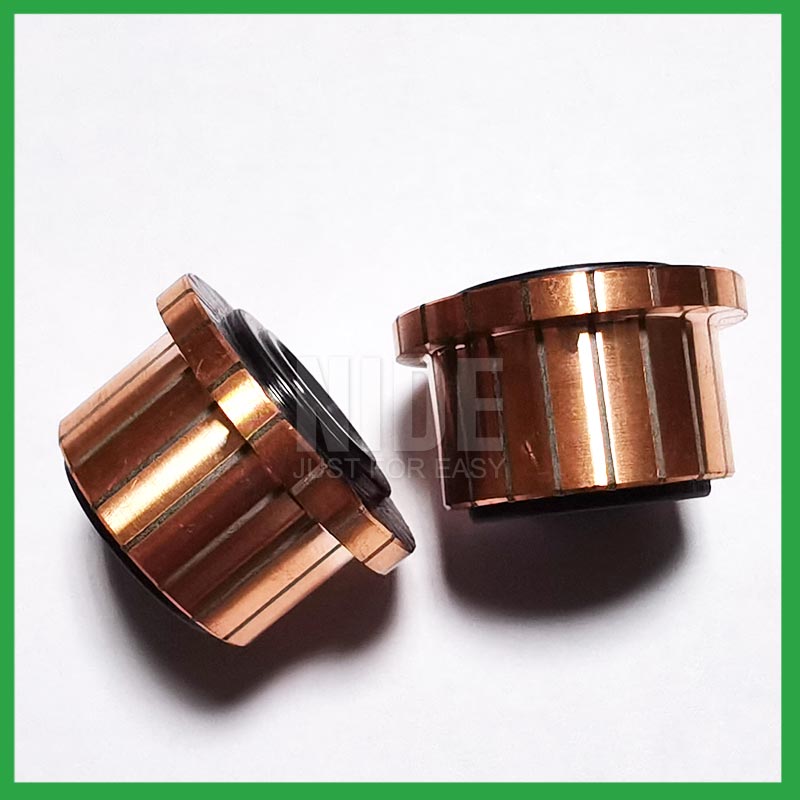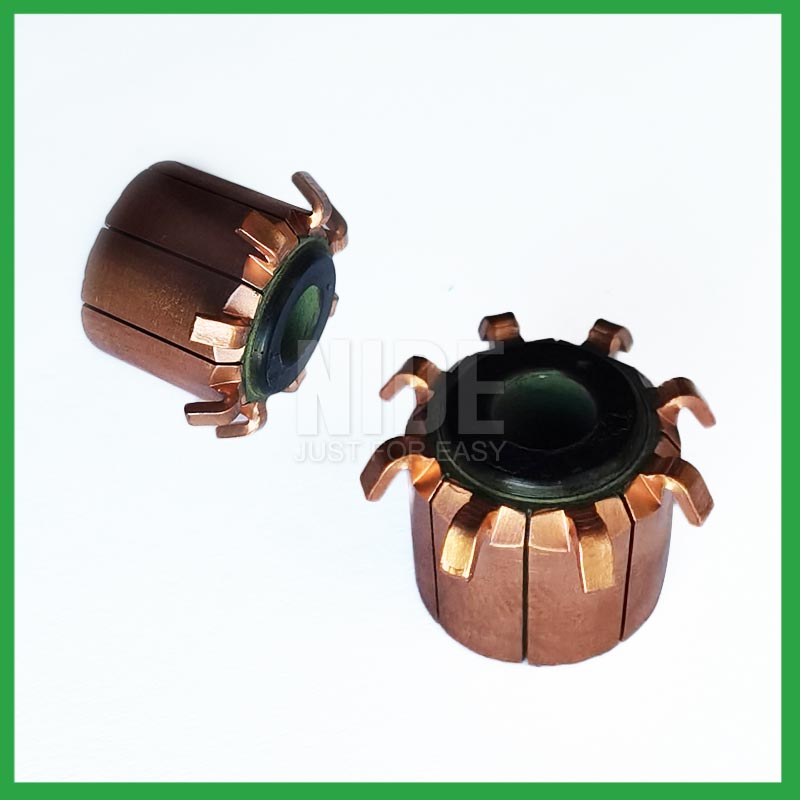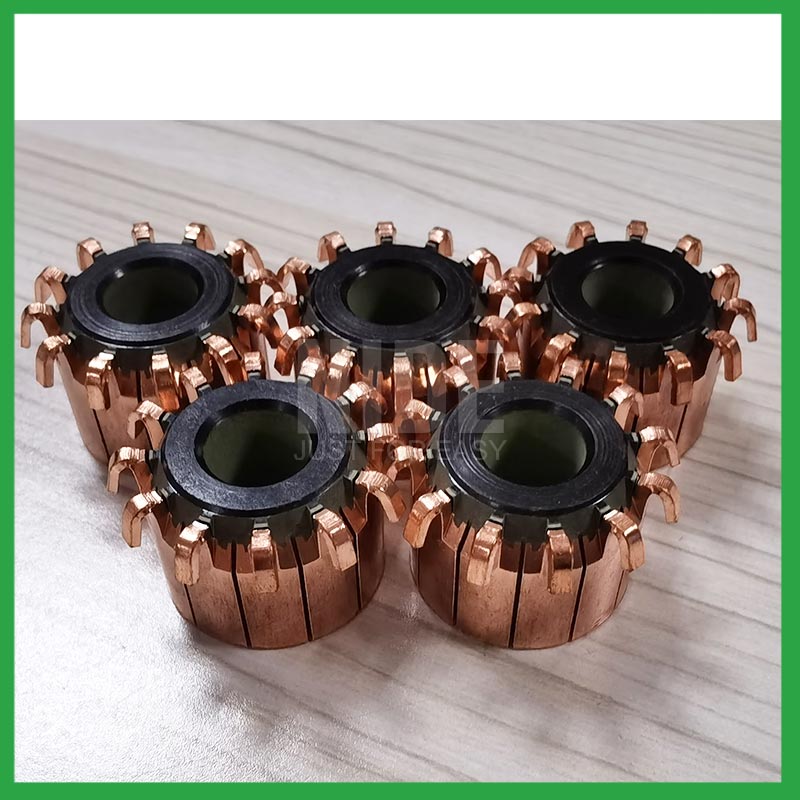2024-07-08
Electric motor commutators are critical components that ensure the efficient operation of various types of motors. Over time, commutators can accumulate dirt, dust, and other contaminants, which can affect their performance and longevity. Regular cleaning and maintenance are essential to keep these components in optimal condition. Nide International, a prominent name in the industry, provides valuable insights into the most effective cleaning techniques for electric motor commutator.
The commutator is a vital part of an electric motor, responsible for reversing the direction of current flow through the motor windings, thus enabling continuous rotation. Due to their function, commutators are subject to significant wear and tear, making regular maintenance crucial. Dirty or damaged commutators can lead to poor motor performance, increased energy consumption, and potential motor failure.

Regular cleaning of commutators offers several benefits:
Before initiating the cleaning process, it is essential to conduct a thorough visual inspection of the commutator. Look for signs of wear, pitting, or scoring on the commutator surface. Check for any loose or damaged brushes as well. If the commutator is severely damaged, it may need to be resurfaced or replaced.
Dry cleaning is often the first step in maintaining a commutator. Use a clean, lint-free cloth to wipe away any loose dust and debris from the commutator surface. Compressed air can also be used to blow away dust particles, but ensure that the air pressure is not too high to avoid damaging the commutator or brushes.
The brushes that contact the commutator can accumulate carbon dust and other debris. Carefully remove the brushes and clean them using a soft cloth or brush. Inspect the brushes for any signs of wear or damage and replace them if necessary. Clean brushes ensure better contact and reduce the risk of sparking or excessive wear.
For more thorough cleaning, a solvent such as isopropyl alcohol can be used. Dampen a soft cloth with the solvent and gently wipe the commutator surface. The solvent helps dissolve and remove oil, grease, and carbon deposits. Ensure that the commutator is completely dry before reassembling the motor. Avoid using abrasive cleaners or materials that could scratch the commutator surface.
In some cases, the commutator may require polishing to restore its smooth surface. Use a fine-grit emery cloth or commutator stone to polish the surface gently. Rotate the commutator by hand while applying the emery cloth to ensure even polishing. This step helps in removing minor imperfections and improving electrical contact.
For industrial applications where commutators are exposed to harsh environments, ultrasonic cleaning can be highly effective. This method involves submerging the commutator in a cleaning solution and using ultrasonic waves to dislodge contaminants. Nide International recommends this technique for deep cleaning, especially in environments where traditional methods may not be sufficient.

Nide International, a leading manufacturer of electric motor components, emphasizes the importance of regular commutator maintenance. The company's extensive experience in the manufacturing and supply of high-quality commutators ensures that their products meet the highest standards of performance and durability.
Recognizing that different applications may require specific maintenance approaches, Nide International offers customized solutions and OEM/ODM services. These services allow clients to obtain commutators tailored to their unique specifications, ensuring compatibility and optimal performance in their specific applications.
Regular maintenance of commutators not only ensures better motor performance but also offers a significant advantage in terms of reliability and operational efficiency. By following Nide International's recommended cleaning practices, users can achieve improved motor performance, reduced downtime, and lower maintenance costs.
With a strong presence in China and a robust global distribution network, Nide International ensures timely delivery and support to clients worldwide. The company's commitment to quality and customer satisfaction has positioned it as a trusted supplier in the global market.

Effective cleaning and maintenance of electric motor commutators are crucial for ensuring the longevity and performance of motors. Nide International’s comprehensive range of high-quality commutators and their expertise in maintenance practices provide users with the tools and knowledge needed to keep their equipment running smoothly. By following the recommended cleaning techniques and utilizing Nide International's customized solutions, users can achieve enhanced performance, cost savings, and extended equipment life.
Regular maintenance not only extends the life of the commutator but also ensures the overall efficiency and reliability of the motor. As the demand for high-performance electric motors continues to grow, adhering to proper maintenance practices will become increasingly important. Nide International’s commitment to innovation and quality makes it a valuable partner in achieving these goals.
Tags: 8 segmented DC motor hook commutator for Push rod motor